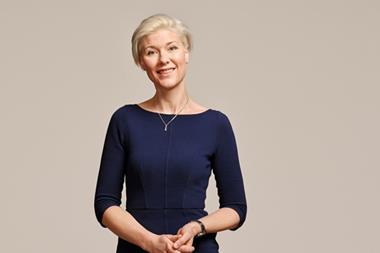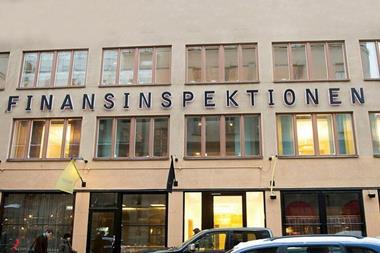This year is Hans Christian Andersen’s 200th anniversary and, appropriately, the Copenhagen property market is in an almost fairy-tale stage of its development. It looks brighter than it has for a long time as a consequence of Denmark’s solid economic growth.
The Danish economy, which is considered to be one of the most stable and vigorous in Europe, is fundamentally strong, and the economic upturn is expected to continue. It started in 2004 with gross domestic product (GDP) growth of 2.1% – mainly driven by a significant increase in private consumption. This year increasing exports have also contributed to growth and GDP is expected to increase by 2.4%.
Job creation has gathered momentum, with the unemployment rate falling to 5.7% last August from a peak of 6.7% at the end of 2003.
Jobs are being created primarily as a result of private sector expansion, especially within the building, finance, and business services sectors. Copenhagen has benefited the most from this. Despite the drop in unemployment and a further drop expected during the next few years, salary increases remain moderate.
In addition, the Danish economy is characterised by a strong currency which is tied to the euro, historically low interest rates, a solid balance of payments surplus (2.6% of GDP in 2004 and a likely 3.1% this year) and core inflation under control. The Danish economy is not affected by increasing oil prices as much as many other countries, since Danish industry is highly energy-efficient and Denmark is a net exporter of oil.
In addition to these hard facts, the Danish business sector is in many ways healthier than in many other European countries. It has escaped long-lasting public subsidy schemes and the Danish labour market is among the most flexible in Europe, with fast and not-so-costly adjustments possible among the labour force.
In recent years there has been a rise in professionalism in the Copenhagen property market, which constitutes 80-85% of the total Danish property investment market. Advisers can show an increased focus on property investments, with departments devoted to this sector exclusively.
IPD has carried out returns measurement since 2000 as part of a trend towards a more transparent market. And it has also become more international, with Danish investors investing abroad and more foreign players entering the Danish market.
In recent years, international investors such as DEKA, Cargill, Teesland iOG, Merrill Lynch, KLP, AIG, Doughty Hanson and some Icelandic groups have entered the Copenhagen market. Moreover, new types of investment vehicles with local management, including API Property Fund Denmark, have entered the market.
The traditional picture of the Copenhagen market, characterised by a small number of large investors (primarily Danish pension funds) illiquidity and a lack of transparency (due to a large share of off-market transactions) is changing.
It’s significant that Denmark has the lowest transaction costs (0.6% stamp duty) in Europe. Leases are typically ”open-ended” even though they expire.
Copenhagen is often seen as the gateway to Scandinavia and the Baltic states. The city offers many attractive features for hosting Scandinavian headquarters of international companies. The infrastructure is excellent and includes Copenhagen Airport – the largest international airport in Northern Europe – a well-developed motorway network and a well-educated labour force coming from greater Copenhagen and Southern Sweden. The latter is linked to Copenhagen by a road/rail tunnel and bridge.
The office rent level is relatively low in a Nordic and international context, and the opportunities for new constructions at attractive locations continue to be good. Prime office rent is approximately e220 per m2/year, while secondary rent is approximately e120 per m2/year.
The largest investment market in Copenhagen is without doubt the office sector. With approximately 11m m2, the Copenhagen market ranks second among the Nordic cities after Stockholm. The old and charming central business district, which constitutes approximately 3m m2, is primarily interesting for tenants looking for less than 3,000m2 spaces. Large office spaces are found along the waterfront in the attractive northern part of the city, in Ørestad and in the suburbs.
Ørestad is a new district situated just 10 minutes by metro from Copenhagen City. It has a development pipeline of 3.1m m2, of which 900,000m2 have been launched within the last five years.
The attractive development sites that still exist in Copenhagen and the fact that the office market is characterised by little or no speculative development, are important factors for ensuring a stable market.
The market experienced vigorous growth in new constructions during the period 1998-2002, primarily along the waterfront. When the IT bubble burst in 2000 many of these new properties became redundant, and many of them have been wholly or partly empty, even though they were rented out. Building of new office space has been moderate since 2003.
When viewed across the period 1992-2004 the rate of vacant office space in greater Copenhagen is relatively low and not very volatile, peaking at 8.7 % at the beginning of Q4 2004. The vacancy statistics show that the office market has shifted, with the most recent figures indicating a vacancy rate of 7.1%.
Similarly, the vacancy rate in Copenhagen City is down from 8.5% at the beginning of Q4 2004 to 7.2% at the beginning of Q4 2005.
The drop in vacancies over the last year has primarily been driven by increased letting of small office spaces of less than 1,000m2. But recently the demand for larger office space has also increased.
We expect this trend to continue alongside the fall in unemployment rates.
Construction of new office properties is expected to gather momentum as vacancies decline. So far, the most recent new constructions have been headquarter buildings (larger than 5,000m2), but multi-let, business parks and other alternatives are expected.
The level of office rent in Copenhagen has been under pressure since 2001, but recovered at the end of 2004 and is now showing signs of a moderate increase. The possibilities for new constructions, which continue to be substantial, will continue to put a damper on future rent increases.
The average annual total return on office property in Denmark during the period 2000-2004 was 8.1%. We expect an average total return of 9.8% annually for office properties during the period 2005-2009.
Investor demand for attractive office properties is strong, with a resulting decrease in initial yield. The initial yield of prime office property is now approximately 5.5-6%, whereas the initial yield for secondary office property is 6.25-6.5%.
The other major property segment on the Copenhagen market is retail, including shopping centres. The popularity of shopping centres in Denmark is on the rise and today accounts for almost 25% of total sales (up from approximately 20% five years ago). There are hardly any vacancies in shopping centres or in the well-situated retail properties and the retail sector is supported by the strong private consumption.
In recent years, two large shopping centres have been opened in Copenhagen: Fisketorvet at 55,000 m2, and the 115.000m2 Field’s in Ørestad (Scandinavia’s largest shopping centre), Other large centres on the outskirts of Copenhagen are being renovated and updated to reflect today’s tastes.
Altogether, almost 40 shopping centres are being constructed or renovated across Denmark. Purchases and sales of shopping centres are rare and when they occur the initial yield is as low as 5.00%.
The investment market for small retail property in Copenhagen is highly influenced by tax-driven private investors, with a prime yield of 4.75%. The investment possibilities are now limited and Danish investors are looking abroad, focusing especially on Sweden and Finland.
In summary, the Copenhagen property market is becoming more buoyant and we believe that the prevailing macroeconomic climate makes this trend sustainable. Because the market is also being handled more professionally we think that investors are facing a bright future.












No comments yet